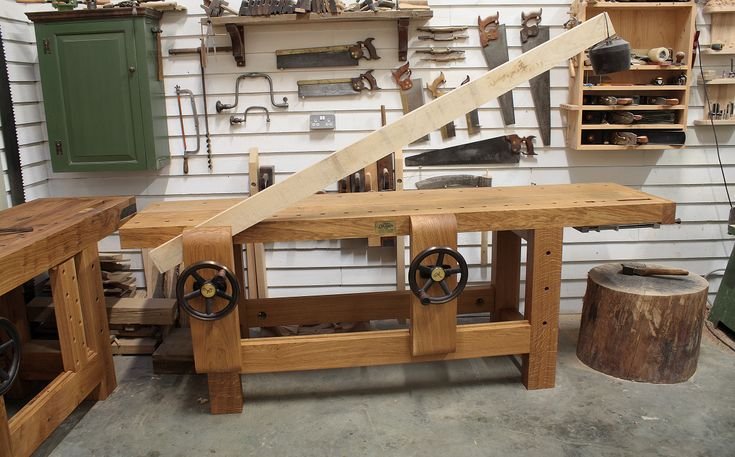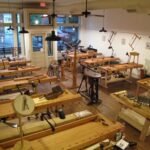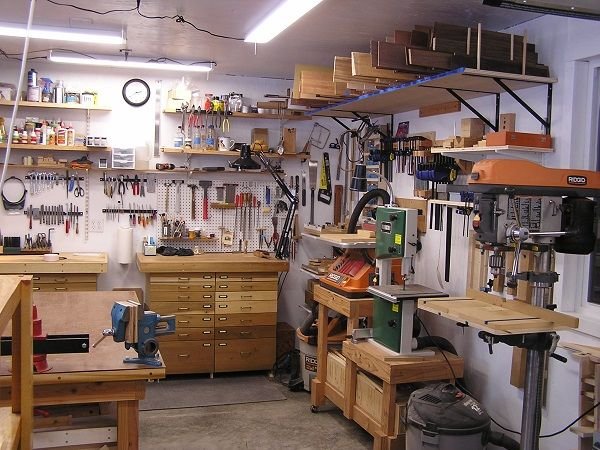Finding the Right Router for Woodworking: A Tale from My Garage
Sippin’ coffee this Sunday morning, I found myself staring at that dusty corner of my garage. You know the one—where all sorts of tools lay in disarray, each with its own half-told story. It’s the place where my dreams of building elegant furniture clash with the reality of my clumsy DIY attempts. And right there, sitting pridefully on a shelf, was my trusty router. It dawned on me just how pivotal that piece of equipment was in my woodworking escapades, so I figured I’d share how I stumbled into this whole router situation—maybe it’ll save you some hassle.
The First Attempt: A Router for Beginners
So it all started a few years back when I was really just a wood enthusiast. I had the grand idea to build my own dining table, you know? And not just any table, but one that would make my grandma proud. I went full steam ahead, planning out the design and picking up some beautiful oak from the local lumber yard. It’s crazy how that place smells—the cedar and fresh-cut oak wafting through the air. It pulls you in, makes you feel like a master carpenter right off the bat.
Of course, I was all hyped up and didn’t want to shell out too much cash for tools just yet. I mean, who could blame me? So, I did what any novice would do: I picked up one of those bargain-bin routers. Not the worst tool ever—the kind that felt like it might just work for simple jobs—but let me tell you, it had its faults. Like, there was this persistent whine that sounded like a mosquito trapped in my ear.
The Moment of Truth
So there I was, all set up in my garage, wood pieces clamped down, and I was ready to make my first plunge cut. I remember holding my breath for a second, thinking, “This is it!” And then I pressed that little button. The router roared to life, and before I knew it, I could feel the vibrations going straight through my bones—a mix of exhilaration and terror.
But what happened next? Well, let’s just say I quickly learned that my lack of experience, combined with a flimsy router, wasn’t the most productive combination. Halfway through the cut, the router jumped out of my hands, and I nearly lost a chunk of my workshop—thankfully, not my fingers! I chuckled—what had I gotten myself into?
Lessons Learned
After that fiasco, I realized that I needed to take this seriously. I was passionate about woodworking; it felt in my bones. So, I did what any decent hobbyist would do: I researched. I watched videos, read forums, asked around—turned out, routers were not just tools; they were a whole world of possibilities and pitfalls.
I figured I needed a more reliable option if I ever wanted to create those clean, smooth edges you see in magazines. I eventually landed on a mid-range model from a brand that friends of mine swore by: the Bosch 1617. Now, don’t get me wrong; it wasn’t a bank-breaker, but it felt good in my hands, a solid weight that made me feel like I wasn’t going to lose control—even if my nerves rattled occasionally.
The Real Deal: Creating Magic
When I finally plugged in the Bosch and brought it to that same oak slab, it was a different experience altogether. It hummed gently, cutting through the wood with confidence. The sound of the bit slicing wood—it’s music to an amateur woodworker’s ears! I felt a sense of pride building when that router glided smoothly along my carefully marked lines, yielding perfectly even edges.
And oh, the smell of freshly cut oak! There’s something magical in that aroma—it’s rich, nutty, and it whispers promises of projects yet to come. I remember laughing out loud when, after all my earlier mishaps, it finally worked just as I’d imagined. I couldn’t believe it.
Wood Type Matters
Now, let’s talk about wood for a sec. I found out pretty quickly that different types of wood perform differently with various routers. I had a brief encounter with some softer pine, thinking it would be a breeze, but boy—those knots nearly made me pull my hair out. I quickly realized that some woods required different bits and speeds, but that was part of the learning curve, right?
The Journey’s Ongoing
As my coffee is running low, I’m reminded that this woodworking journey rarely gets smooth. It’s filled with mistakes, lessons, and the smell of sawdust as it clings to my jeans. Each project has been an adventure in itself. Sometimes I nail it, and other times I end up with, well, let’s say “creative solutions.” Sometimes, I’ve considered throwing my tools out the window in frustration, but there’s always that moment when everything clicks—and it makes all the stumbling worth it.
Warm Takeaway
So if you’re out there, considering diving into woodworking or maybe just figuring out the router game, let me say: just go for it. Get a decent router, learn as you go, and don’t be afraid to mess up. Those missteps? They’re all part of the process. Trust me, in the end, you’ll have stories to tell, tables to share meals on, and projects that bring a little piece of your heart into each room.
Thanks for sharing a moment with me over coffee, friends—I feel energized, and I’m ready to dive back into that workshop. Happy carving!









